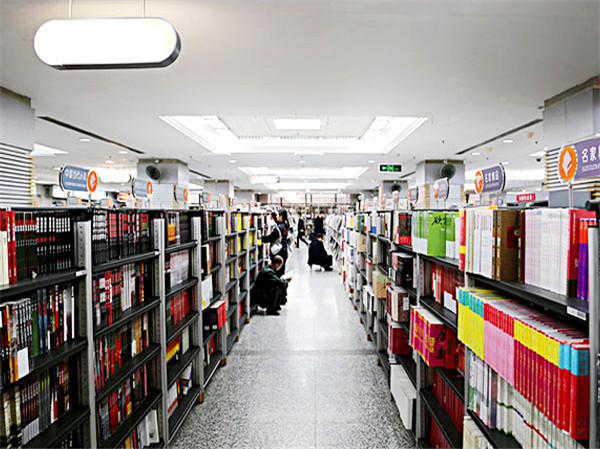
官方真题Official9托福阅读Passage3题目
Question 1 of 14
The phrase “at random ” in the passage is closest in meaning to
A. finally
B. over a long period of time
C. successfully
D. without a definite pattern
Question 2 of 14
It can be inferred from paragraph 2 that the fungi in lichens benefit from their symbiotic relationship with algae in what way?
A. The algae help the fungi meet some of their energy needs.
B. The algae protect the fungi from the Sun's radiation.
C. The algae provide the fungi with greater space for absorbing water.
D. The fungi produce less waste in the presence of algae.
Question 3 of 14
Which of the sentences below best expresses the essential information in the highlighted sentence in the passage? Incorrect choices change the meaning in important ways or leave out essential information.
A. Some of the earliest important examples of symbiosis—the close cooperation of two or more living things—occur in island communities.
B. Symbiosis—the close cooperation of pairs or small groups of living organisms—is especially important in these island environments.
C. The first organisms on these islands worked together closely in a relationship known as symbiosis, which is particularly important on islands.
D. It is significant to note that organisms in the beginning stages of the development of island life cannot survive without close cooperation.
Question 4 of 14
The word “abundantly ” in the passage is closest in meaning to
A. occasionally
B. plentifully
C. usefully
D. fortunately
Question 5 of 14
The word “propagate ” in the passage is closest in meaning to
A. multiply
B. emerge
C. live
D. evolve
Question 6 of 14
According to paragraph 3, what was the relationship between lichens and ferns in the development of plant life on Hawaii?
A. Ferns were able to grow because lichens created suitable soil.
B. The decomposition of ferns produced minerals that were used by lichens.
C. Lichens and ferns competed to grow in the same rocky environments.
D. Lichens and ferns were typically found together in volcanic areas.
Question 7 of 14
The word “This ” in the passage refers toA. the spread of ferns and mosses in Hawaii
B. the creation of the Hawaiian Islands
C. the evolution of ferns
D. the development of plants that produce seeds
Question 8 of 14
According to paragraph 4, why do seeds have a greater chance of survival than spores do? To receive credit, you must select TWO answer choices.
A. Seeds need less water to grow into a mature plant than spores do.
B. Seeds do not need to rely on outside sources of nutrients.
C. Seeds are better protected from environmental dangers than spores are.
D. Seeds are heavier than spores and are therefore more likely to take root and grow.
Question 9 of 14
Why does the author mention “a nut”, “a peach”, and “a cherry”?
A. To indicate that some seeds are less likely to survive than others
B. To point out that many angiosperms can be eaten
C. To provide examples of blooming plants
D. To illustrate the variety of coverings among angiosperm seeds
Question 10 of 14
The word “dormant ” in the passage is closest in meaning to
A. hidden
B. inactive
C. underground
D. preserved
Question 11 of 14
According to paragraph 5, a major reason that coconuts can establish themselves in distant locations is that their seeds can
A. survive long exposure to heat on island beaches
B. float and survive for long periods in ocean water
C. use saltwater for maintenance and growth
D. maintain hard, protective coats even after growing roots
Question 12 of 14
According to the passage, which of the following characteristics do spores and seeds have in common?
A. They may be surrounded by several layers of covering.
B. They are produced by flowering plants.
C. They may be spread by wind.
D. They are able to grow in barren soils.
Question 13 of 14
Look at the four squares [■] that indicate where the following sentence could be added to the passage. Where could the sentence best fit?
So since the chances of survival for any individual spore are small, the plants have to produce many spores in order to propagate..
Question 14 of 14
Directions: An introductory sentence for a brief summary of the passage is provided below. Complete the summary by selecting the THREE answer choices that express the most important ideas in the passage. Some answer choices do not belong in the summary because they express ideas that are not presented in the passage or are minor ideas in the passage. This question is worth 2 points.After the formation of the Hawaiian Islands, much time passed before conditions were suitable for plant life.
A.Algae are classified as symbiotic because they produce energy through the process of photosynthesis.
B.The first successful plants on Hawaii were probably lichens, which consist of algae and fungi living in a symbiotic relationship.
C.Lichens helped create favorable conditions for the growth of spore-producing plants such as ferns and mosses.
D.Seed-bearing plants evolved much later than spore-producing plants, but both types of plants had evolved well before the formation of the Hawaiian Islands.
E.Unlike spores, seeds must move to new habitats in order to have a strong chance of survival and growth.
F.Seed-bearing plants arrived and spread quickly in Hawaii, thanks to characteristics that increased their seeds’ ability to survive and to move to different areas.
查看官方真题Official9托福阅读Passage3的答案解析请进入下一页→→→
相关推荐
-
【官方真题Official托福阅读】官方真题Official3托福阅读词汇真题练习——pales&significance
2015-11-19![【官方真题Official托福阅读】官方真题Official3托福阅读词汇真题练习——pales&significance]()
-
【托福听力备考】官方真题Official听力高频词汇——文学讲座学科词汇汇总
2015-11-06![【托福听力备考】官方真题Official听力高频词汇——文学讲座学科词汇汇总]()
-
托福到底能考多少分?19年必练真题告诉你答案
APP专享![托福到底能考多少分?19年必练真题告诉你答案]()
-
【官方真题Official托福模考】官方真题Official4托福阅读词汇真题练习 adjacent&nearby
2015-12-04![【官方真题Official托福模考】官方真题Official4托福阅读词汇真题练习 adjacent&nearby]()
-
官方真题Official5托福阅读词汇真题练习——promote&complicate
2015-12-09![官方真题Official5托福阅读词汇真题练习——promote&complicate]()
-
【官方真题Official托福阅读】官方真题Official3托福阅读词汇真题练习——ensuing&initial
2015-11-19![【官方真题Official托福阅读】官方真题Official3托福阅读词汇真题练习——ensuing&initial]()
-
【官方真题Official托福阅读】官方真题Official3托福阅读词汇真题练习——particular&final
2015-11-19![【官方真题Official托福阅读】官方真题Official3托福阅读词汇真题练习——particular&final]()
-
【官方真题Official托福阅读】官方真题Official3托福阅读词汇真题练习——arduous&difficult
2015-11-19![【官方真题Official托福阅读】官方真题Official3托福阅读词汇真题练习——arduous&difficult]()
-
【官方真题Official托福阅读】官方真题Official3托福阅读词汇真题练习——guarantee&ensure
2015-11-19![【官方真题Official托福阅读】官方真题Official3托福阅读词汇真题练习——guarantee&ensure]()
-
【托福阅读备考】官方真题Official1托福阅读词汇真题练习——plugged&washed
2015-11-09![【托福阅读备考】官方真题Official1托福阅读词汇真题练习——plugged&washed]()
-
【托福听力备考】官方真题Official听力高频词汇——歌剧讲座学科词汇汇总
2015-11-06![【托福听力备考】官方真题Official听力高频词汇——歌剧讲座学科词汇汇总]()
-
【官方真题Official托福阅读】官方真题Official3托福阅读词汇真题练习——unprecedented&virtually
2015-11-19![【官方真题Official托福阅读】官方真题Official3托福阅读词汇真题练习——unprecedented&virtually]()
-
官方真题Official8托福阅读词汇真题练习——disruption&exhaustion
2015-12-18![官方真题Official8托福阅读词汇真题练习——disruption&exhaustion]()
-
【托福阅读备考】官方真题Official1托福阅读词汇真题练习汇总
2015-11-09![【托福阅读备考】官方真题Official1托福阅读词汇真题练习汇总]()
-
【官方真题Official托福阅读】官方真题Official3托福阅读词汇真题练习——inevitable&final
2015-11-19![【官方真题Official托福阅读】官方真题Official3托福阅读词汇真题练习——inevitable&final]()
-
【托福阅读备考】官方真题Official1托福阅读词汇真题练习——dramatic&gradual
2015-11-09![【托福阅读备考】官方真题Official1托福阅读词汇真题练习——dramatic&gradual]()
-
官方真题Official7托福阅读词汇真题练习——fostered&accepted
2015-12-11![官方真题Official7托福阅读词汇真题练习——fostered&accepted]()
-
【官方真题Official托福阅读】官方真题Official3托福阅读词汇真题练习——devised&suggested
2015-11-19![【官方真题Official托福阅读】官方真题Official3托福阅读词汇真题练习——devised&suggested]()
-
【官方原题Official模考软件】小站推荐考托模考测试题B1
2014-05-04![【官方原题Official模考软件】小站推荐考托模考测试题B1]()
-
【小站推荐】官方原题Official模考软件之考托模考测试题C1
2014-05-04![【小站推荐】官方原题Official模考软件之考托模考测试题C1]()
-
【官方真题Official托福阅读】官方真题Official3托福阅读词汇真题练习——integral&variable
2015-11-19![【官方真题Official托福阅读】官方真题Official3托福阅读词汇真题练习——integral&variable]()
定制专属课程规划
领取成功
添加助教,定制你的专属课程规划

每日提分任务
专业提分资料
全程督学答疑
























